According to the former owner, this part of Sir Norman´s legacy – consisting of his Wolseley helmet, album of photographs, Royal Warrant, some more papers and his fly whisk – came from a private house auction and was brought there for fancy dress purposes. A nice idea – and a nice imagination as well, to go to a fancy dress party just covered with Sir Norman´s helmet and swinging his fly whisk. If one gets arrested dressed like this – there is still the Royal Warrant, signed by George VI., to have at least some kind of legitimation. But were to put it without a pocket? Maybe folded in the liner of the helmet, the same place where Lord Kitchener, according to his biographer Philip Magnus, carried dispatch leaflets with him.But seriously, though the uniform is not present any more, one of Sir Norman´s photographs shows this very helmet as it was used with the formal dress. The album contained as well two documents that explained the reason for taking pictures in formal dress, Edgley´s appointment as a judge at Calcutta High Court in 1939. So, altogether, this well documented usage of a military sun helmet by a member of the civil service is worth showing.
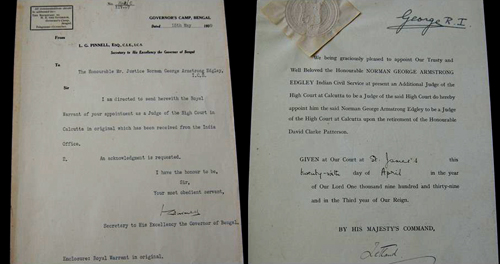
Accompanied by a letter sent from the Governor´s Camp, Bengal, Sir Norman Edgley received the Royal Warrant on May 16th, 1939. (Author’s collection)
Edgley was born in 1888. Having studied at Oxford and passed into the Indian Civil Service (ICS) in 1910, he held different positions in the legal administration of British India. After the British withdrawal from India, Edgley served as judge with the Allied High Commission in the British zone of occupation in Germany from 1948 to 1955. He died in 1960.
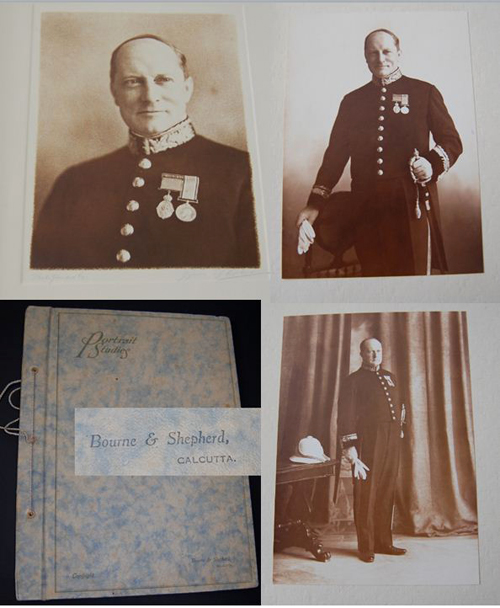
These Bourne & Shepherd´s pictures of the newly appointed judge are dated 1939. (Author’s collection)
The album itself is a nice document of Anglo-Indian photo-graphical history. The cover and the photographs inside are signed Bourne & Shepherd, Calcutta. This company, first founded in 1863, does still exist today! Samuel Bourne became famous for the pictures of Indian people and landscapes he took between 1863 and 1870. Later, his company was something like the premier photographers in their trade, being official photographers on many state occasions, with branches in most centers of Anglo-Indian life, like Simla. The album contains photographs of Edgley in five different poses, one showing him with his Wolseley helmet on a table beside him.
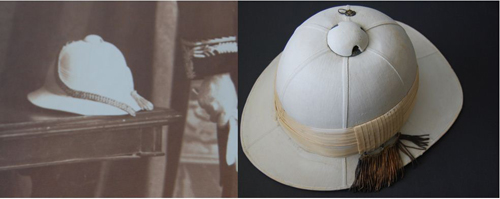
The puggaree appears white on the 1939 picture. It is of silk and has a yellowish color today – probably faded. (Author’s collection)
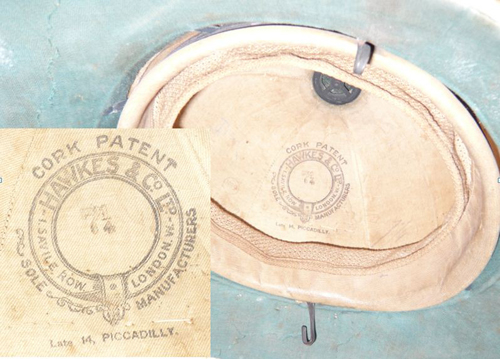
The helmet was made by Hawkes and is stamped “Hawkes 1, Savile Row” and “Late 14, Piccadilly”. The company changed its location in 1912 but still used the wording “Late 14 Piccadilly.”
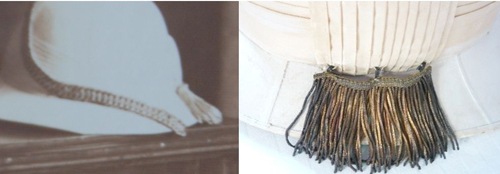
Stuart Bates shows a similar helmet in his book. This example here still has a tassel of golden brocade wire attached to the puggaree. For the studio picture, it is “combed” to the front. Another interesting detail of this arrangement: The chain is fixed at the hook on top but unfastened from the hook beside the liner, inside the helmet, and stretched on the brim of the helmet to the front. Maybe, the photographer thought that more decorative. Today, the helmet is chalked and was probably was so when the picture was taken. (Author’s collection)
Like the helmet, Hawkes presumably made the whole garment, as they apparently did not only find customers among military personal, but among other branches of civil service as well, for they advertised in publications like the Foreign Office List.
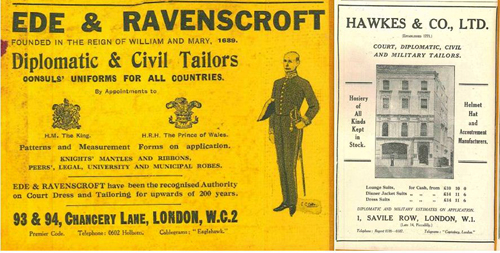
Two out of many adverts from different London outfitters in the “1930 Foreign Office List.” It is interesting to note that Hawkes is still using “Late 14 Piccadilly” in 1930 a full 18 years after their having acquired 1, Savile Row.
Sir Norman had had an interesting professional life with appointments in places as different as India or postwar Germany. According to Who’s Who, he was as well keen on archeology and travel. So he must have seen quite a lot of the world.
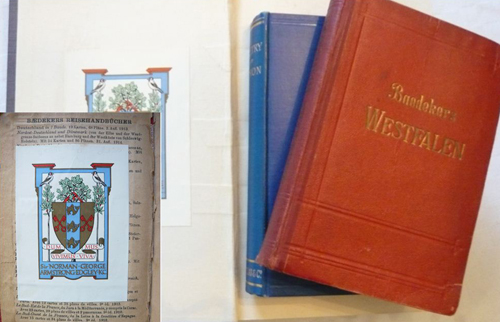
Bookplate of Sir Norman Edgley with the motto: “Dum Vivimus, Vivamus” – “Let us live while we live”, or, “Let us enjoy life.” (Author’s collection)
Finally, research on Sir Norman showed that even his library was spread to antiquarian booksellers literally all over the world – England, USA, Germany – traceable by his beautiful bookplate, mentioned in the seller´s descriptions. So, a book on Dacca was found in the UK, a copy of Byron´s Poems in the US and Baedeker´s Guide book “Westfalen” in Berlin. Weather he dropped them himself when leaving a country or they “travelled” again alone after his death, is not known. One useful thing, at least, he kept:
Roland Gruschka

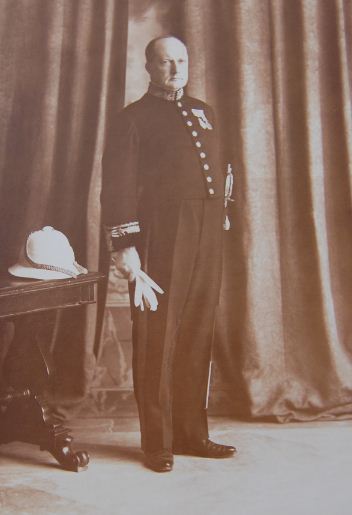
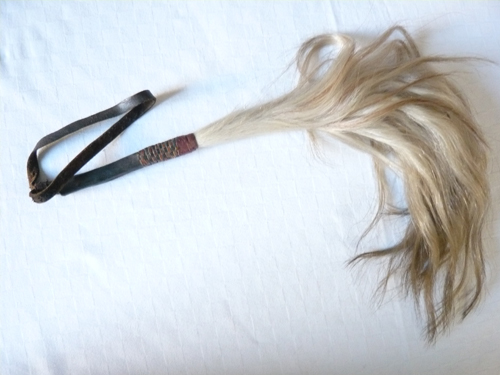
Roland,
Good going. I have a similar white Wolseley in full dress, but it has lost the gold braid tassles. I would be interested in seeing detailed, close-ups of its construction. I aim to make it a copy, one day.
One odd feature of the white, usually regimental Wolseleys, is that although they used chin-chains, they more rarely appear with high hooks, which seems to leave them unfinished. I have two or three Edwardian examples, and all have chains, yet no high hooks. It is possible they were using hooks which fitted into the vent dome, but have since been lost. A lacuna. Often, beneath the puggarees on the left hand side will be found a pocket watch fob style of hook, for the left side of the chin chain, not to have it going underneath the brim. A very smart way of doing it.
Best.
Chris Mills.
Sir Norman was the first cousin to my grandfather, Francis Joseph Edgley. Any information on his life, personal or public would be appreciated.
Frank C. Edgley
Hello Mr. Edgley
I have been researching Sir Norman for several years since I acquired a pair of Zeiss binoculars on Ebay bearing his engraved name in silver on the prism caps . This is the first time I have actually found a person with contact information that I can chat with. The binoculars were purchased by him in Germany shortly before his death. I have original sales slip, leather case and paperwork. Apparently they were not used very much since there is no sign of wear at all. They were purchased at Bockelman in Bielefeld Germany on June 18, 1959 for 750 DM. If you or any family member are interested please provide your email address and I will forward pictures of these items. I am an optics collector (user name opticchase on ebay) and I am slowly reducing a vast inventory of binoculars . These are a fine example of the best from Zeiss. I have always thought that the family should have an opportunity to re-acquire these since they are so personal.
I am sorry I did not leave contact information. I am
Richard Martin
Mission Viejo, California.
My email is: Rmartin8@cox.net. Phone is 949-598-0991 . Cell is: 714- 240-0663